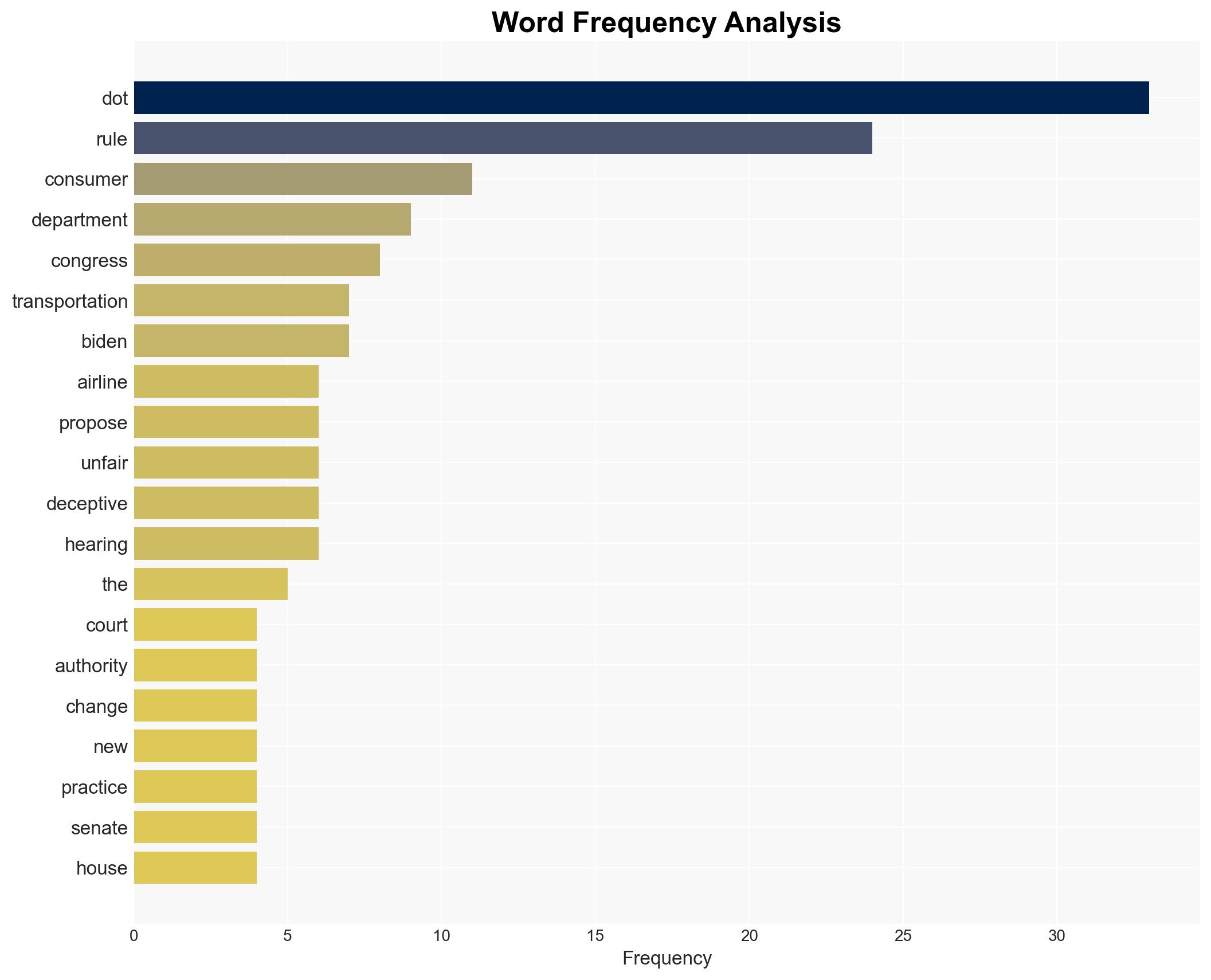DOT Keeps Losing In Court Over Airline RulesSo Theyre Slowing Down To Craft Consumer Protections That Stick – Viewfromthewing.com
Published on: 2025-11-17
AI-powered OSINT brief from verified open sources. Automated NLP signal extraction with human verification. See our Methodology and Why WorldWideWatchers.
Intelligence Report: DOT’s Strategic Shift in Airline Regulation
1. BLUF (Bottom Line Up Front)
The Department of Transportation (DOT) is strategically altering its approach to crafting airline consumer protection rules to withstand legal challenges. The most supported hypothesis is that DOT is deliberately slowing its rulemaking process to develop robust, legally defensible regulations. This approach aims to balance consumer protection with the legal authority constraints. Confidence Level: Moderate.
2. Competing Hypotheses
Hypothesis 1: DOT is intentionally slowing its rulemaking process to ensure new regulations are legally durable and less susceptible to court challenges. This hypothesis is supported by the DOT’s history of losing court cases due to overstepping its authority and the need to craft rules that align with legal precedents and mandates.
Hypothesis 2: DOT’s slow rulemaking is a result of bureaucratic inefficiencies and internal disagreements, rather than a strategic shift. This hypothesis considers the possibility of internal challenges within the DOT that hinder swift rulemaking, such as resource constraints or conflicting priorities.
The first hypothesis is more likely due to the strategic nature of the adjustments in rulemaking processes, such as the inclusion of evidentiary hearings and neutral officers, which indicate a deliberate effort to strengthen legal defensibility.
3. Key Assumptions and Red Flags
Assumptions: It is assumed that DOT has the capability and resources to implement the new rulemaking processes effectively. Additionally, it is assumed that the legal environment will remain stable enough for these changes to have the desired effect.
Red Flags: Potential red flags include any sudden changes in leadership within the DOT, shifts in congressional support, or unexpected legal challenges that could disrupt the rulemaking process.
4. Implications and Strategic Risks
Implications: The strategic shift in DOT’s rulemaking could lead to more robust consumer protections that are less likely to be overturned in court, potentially setting a precedent for other regulatory bodies. However, this could also lead to increased regulatory burdens on airlines, potentially affecting their operational costs and pricing strategies.
Strategic Risks: There is a risk of political backlash if the new rules are perceived as overly burdensome or if they fail to adequately protect consumers. Additionally, prolonged rulemaking processes could delay the implementation of necessary consumer protections, leaving passengers vulnerable in the interim.
5. Recommendations and Outlook
- Actionable Steps: DOT should engage with stakeholders, including airlines and consumer groups, to gather input and build consensus on rulemaking. Additionally, DOT should conduct thorough legal reviews to ensure new rules align with existing legal frameworks.
- Best Scenario: DOT successfully implements new, legally durable consumer protection rules that enhance passenger rights without imposing undue burdens on airlines.
- Worst Scenario: Legal challenges continue to overturn DOT rules, leading to regulatory uncertainty and weakened consumer protections.
- Most-likely Scenario: DOT’s new rulemaking approach results in moderately improved consumer protections that withstand legal scrutiny but require ongoing adjustments and refinements.
6. Key Individuals and Entities
Key individuals and entities include the Department of Transportation, the Biden Administration, and the Federal Trade Commission. Specific individuals within these entities are not identified in the source text.
7. Thematic Tags
Cybersecurity, Regulatory Strategy, Legal Compliance, Consumer Protection, Aviation Industry
Structured Analytic Techniques Applied
- Adversarial Threat Simulation: Model and simulate actions of cyber adversaries to anticipate vulnerabilities and improve resilience.
- Indicators Development: Detect and monitor behavioral or technical anomalies across systems for early threat detection.
- Bayesian Scenario Modeling: Quantify uncertainty and predict cyberattack pathways using probabilistic inference.
Explore more:
Cybersecurity Briefs ·
Daily Summary ·
Support us
·





